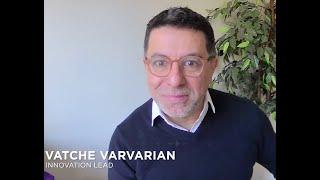Today we’re discussing synthetic data - that is, data trained by AI and computer simulations, rather than gathered from the real world.
Now, generating theoretical data is nothing new - we’ve been taking small samples of things and extrapolating from it for decades. However, with the advent of AI we don’t necessarily just need to extrapolate. We can generate completely new, close-to-real data using AI.
But why? And why does it matter? To explain we’re joined by Chief Technology Officer for AI at Hewlett Packard Enterprise, Matt Armstrong-Barnes
This is Technology Now, a weekly show from Hewlett Packard Enterprise. Every week we look at a story that's been making headlines, take a look at the technology behind it, and explain why it matters to organizations and what we can learn from it.
Do you have a question for the expert? Ask it here using this Google form: https://forms.gle/8vzFNnPa94awARHMA (https://forms.gle/8vzFNnPa94awARHMA%20)
About the expert: https://uk.linkedin.com/in/mattarmstrongbarnes (https://uk.linkedin.com/in/mattarmstrongbarnes%20)
Sources and statistics cited in this episode:
Mendelev’s predicted elements: https://web.archive.org/web/20081217080509/http://www.scs.uiuc.edu/~mainzv/HIST/awards/OPA%20Papers/2005-Kaji.pdf (https://web.archive.org/web/20081217080509/http://www.scs.uiuc.edu/~mainzv/HIST/awards/OPA%20Papers/2005-Kaji.pdf%20)
Rubin’s proposal and method for synthetic data: https://www.scb.se/contentassets/ca21efb41fee47d293bbee5bf7be7fb3/discussion-statistical-disclosure-limitation2.pdf
NASA directed to create Lunar time: https://www.reuters.com/science/white-house-directs-nasa-create-time-standard-moon-2024-04-02/
Now, generating theoretical data is nothing new - we’ve been taking small samples of things and extrapolating from it for decades. However, with the advent of AI we don’t necessarily just need to extrapolate. We can generate completely new, close-to-real data using AI.
But why? And why does it matter? To explain we’re joined by Chief Technology Officer for AI at Hewlett Packard Enterprise, Matt Armstrong-Barnes
This is Technology Now, a weekly show from Hewlett Packard Enterprise. Every week we look at a story that's been making headlines, take a look at the technology behind it, and explain why it matters to organizations and what we can learn from it.
Do you have a question for the expert? Ask it here using this Google form: https://forms.gle/8vzFNnPa94awARHMA (https://forms.gle/8vzFNnPa94awARHMA%20)
About the expert: https://uk.linkedin.com/in/mattarmstrongbarnes (https://uk.linkedin.com/in/mattarmstrongbarnes%20)
Sources and statistics cited in this episode:
Mendelev’s predicted elements: https://web.archive.org/web/20081217080509/http://www.scs.uiuc.edu/~mainzv/HIST/awards/OPA%20Papers/2005-Kaji.pdf (https://web.archive.org/web/20081217080509/http://www.scs.uiuc.edu/~mainzv/HIST/awards/OPA%20Papers/2005-Kaji.pdf%20)
Rubin’s proposal and method for synthetic data: https://www.scb.se/contentassets/ca21efb41fee47d293bbee5bf7be7fb3/discussion-statistical-disclosure-limitation2.pdf
NASA directed to create Lunar time: https://www.reuters.com/science/white-house-directs-nasa-create-time-standard-moon-2024-04-02/
- Category
- Hewlett Packard Enterprise
- Tags
- HPE, artificial intelligence, edge to cloud
Be the first to comment






